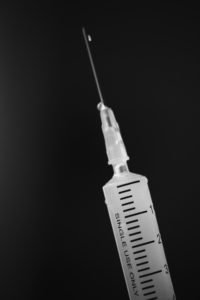 While Botox is often associated with battling wrinkles and fine lines on the face, the medication can actually be used in your…anal region. But not for cosmetic purposes, of course.
While Botox is often associated with battling wrinkles and fine lines on the face, the medication can actually be used in your…anal region. But not for cosmetic purposes, of course.
The muscle-relaxing effects of botulinum toxin can do wonders for patients suffering from painful anal fissures, an anorectal condition that produces sharp rectal pain during bowel movements due to a tear in the anal canal. Typically caused by hard bowel movements or a lack of dietary fiber, fissures usually resolve on their own after responding positively to increased fiber intake, stool softeners, ointments and sitz baths. However, when a fissure fails to heal within six weeks (thereby becoming a chronic fissure), a Botox injection is most likely the preferred plan of attack.
Because Botox blocks the release of acetylcholine, a chemical that causes muscles to contract, injecting it into the muscle surrounding the anus will relax those muscles and reduce tension. Not only does this decrease pain and discomfort, but it also improves blood flow to the fissure, helping it heal more quickly and naturally.
Requiring no anesthetic and only a few minutes on the exam table, the Botox procedure involves 6-8 consecutive injections into the sphincter muscle using a hair-thin needle. And then, you’re done! Patients can simply head home and wait for the Botox to start working after 2-3 days. There usually aren’t any side effects, although slight bleeding/pain and gas incontinence can occur.
Effects should last for at least three months—plenty of time for the fissure to fully heal on its own. With a roughly 70 percent success rate, Botox is a highly preferred method for treating chronic, painful anal fissures.
For more details on what happens before, during and after a Botox injection procedure, click here. If you find yourself dealing with a chronic anal fissure, please contact our clinic for treatment options.




